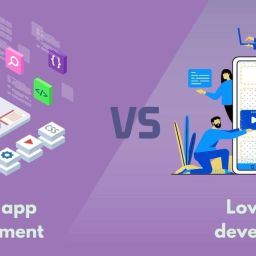
Microservices architecture is a revolutionary approach to software development, changing the way businesses design, develop, and maintain their applications. LeMeniz, a leader in software development, recognizes the significance of microservices and the benefits they offer. In this blog post, we will explore microservices architecture, break down its components, and gain insights from LeMeniz experts on how this approach is transforming the world of software development.
What Are Microservices?
Microservices is an architectural style where a software application is divided into a set of small, independent services that work together to deliver a complete and cohesive functionality. Each microservice focuses on a specific business capability and can be developed, deployed, and scaled independently.
Breaking Down Microservices:
- Decomposition: Microservices begin with breaking down a monolithic application into smaller, manageable components. This decomposition is based on business capabilities, ensuring that each microservice aligns with a specific function or feature.
- Independence: Microservices are independent entities, which means they can be developed, deployed, and maintained separately. This independence allows for agility and faster development cycles.
- Communication: Microservices communicate with each other through well-defined APIs. This enables them to work together to provide end-to-end functionality.
- Scalability: Microservices can be scaled independently based on demand. This ensures that resources are allocated efficiently, preventing over-provisioning or underutilization.
- Resilience: When one microservice fails, it doesn’t bring down the entire application. Instead, only the affected service experiences downtime, increasing the overall resilience of the system.
- Technology Diversity: Each microservice can use the most suitable technology stack for its specific function. This flexibility ensures that the right tools are used for the job.
Insights from LeMeniz Experts:
LeMeniz experts shed light on how microservices are transforming the software development landscape:
- Agility: Microservices allow for faster development cycles, enabling businesses to respond to changing market conditions and customer needs more rapidly.
- Scalability: Microservices provide a scalable architecture that adapts to fluctuations in user demand, ensuring optimal performance.
- Fault Isolation: By isolating faults to individual microservices, issues can be identified and resolved more efficiently, minimizing downtime and disruptions.
- Resource Efficiency: Microservices promote efficient resource allocation, reducing wastage and saving costs.
- Technology Optimization: With the freedom to choose the best technology for each microservice, businesses can leverage the most suitable tools for different functions.
Challenges of Microservices:
While microservices offer numerous advantages, they also come with challenges:
- Complexity: Managing a network of microservices can be complex, requiring robust orchestration and monitoring.
- Inter-Service Communication: Ensuring seamless communication between microservices is essential, but it can also be challenging to implement and maintain.
- Data Management: Coordinating data across microservices while maintaining data consistency can be complex.
Conclusion:
Microservices are revolutionizing the world of software development by enabling businesses to build flexible, scalable, and resilient applications. LeMeniz experts understand the value of this architectural style and how it can empower businesses to thrive in the digital age. By breaking down complex applications into smaller, independent components, microservices provide the agility and scalability needed to stay competitive in today’s fast-paced tech landscape.















